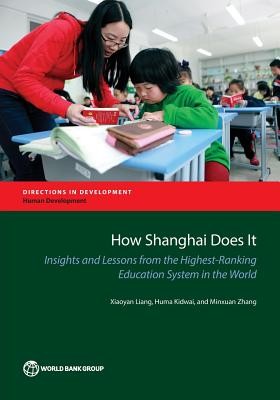
- We will send in 10–14 business days.
- Author: Xiaoyan Liang
- Publisher: World Bank Publications
- ISBN-10: 1464807906
- ISBN-13: 9781464807909
- Format: 17.8 x 25.4 x 1 cm, softcover
- Language: English
- SAVE -10% with code: EXTRA
Reviews
Description
The Shanghai basic education system has garnered significant attention since its extraordinary performance in the 2009 and 2012 Programme for International Student Assessment (PISA), a global assessment of 15-year-olds' educational abilities. Among the 65 participating economies in 2012, Shanghai-China ranked first on all three major domains of PISA, i.e. mathematics, reading, and science. Shanghai also stands out for having the world's highest percentage of "resilient students", students from socio-economically disadvantaged backgrounds who emerge as top performers. Shanghai's PISA story has generated intense discussions and diverse speculations in field of international educational development, and numerous studies have been done in the attempt to unravel the mystery. Missing from the picture however is a more comprehensive, systematic, in-depth, and objective rendition of the policies and practices of Shanghai basic education, benchmarked against others in key dimensions. This report presents an in-depth examination of how Shanghai scored highest in the areas of reading, science, and mathematics on PISA. It documents and benchmarks key policies in basic Shanghai education, provides evidence on the extent to which these policies have been implemented in schools, and explores how these policies have affected learning outcomes. The report uses PISA 2012 data to analyze Shanghai student achievement variation and to examine the extent school variables may be associated with the variation beyond family and student background. It also uses the World Bank's Systems Approach for Better Education Results (SABER), an existing systems diagnostic and benchmarking tool, as an organizing framework and for data collection. School-based surveys and other existing research shed further light on educational impact and implementation. While the report attempts to adopt a systems approach, particular emphasis is placed on teachers, education financing, balancing autonomy and accountability, and student assessment.
EXTRA 10 % discount with code: EXTRA
The promotion ends in 20d.09:37:14
The discount code is valid when purchasing from 10 €. Discounts do not stack.
- Author: Xiaoyan Liang
- Publisher: World Bank Publications
- ISBN-10: 1464807906
- ISBN-13: 9781464807909
- Format: 17.8 x 25.4 x 1 cm, softcover
- Language: English English
The Shanghai basic education system has garnered significant attention since its extraordinary performance in the 2009 and 2012 Programme for International Student Assessment (PISA), a global assessment of 15-year-olds' educational abilities. Among the 65 participating economies in 2012, Shanghai-China ranked first on all three major domains of PISA, i.e. mathematics, reading, and science. Shanghai also stands out for having the world's highest percentage of "resilient students", students from socio-economically disadvantaged backgrounds who emerge as top performers. Shanghai's PISA story has generated intense discussions and diverse speculations in field of international educational development, and numerous studies have been done in the attempt to unravel the mystery. Missing from the picture however is a more comprehensive, systematic, in-depth, and objective rendition of the policies and practices of Shanghai basic education, benchmarked against others in key dimensions. This report presents an in-depth examination of how Shanghai scored highest in the areas of reading, science, and mathematics on PISA. It documents and benchmarks key policies in basic Shanghai education, provides evidence on the extent to which these policies have been implemented in schools, and explores how these policies have affected learning outcomes. The report uses PISA 2012 data to analyze Shanghai student achievement variation and to examine the extent school variables may be associated with the variation beyond family and student background. It also uses the World Bank's Systems Approach for Better Education Results (SABER), an existing systems diagnostic and benchmarking tool, as an organizing framework and for data collection. School-based surveys and other existing research shed further light on educational impact and implementation. While the report attempts to adopt a systems approach, particular emphasis is placed on teachers, education financing, balancing autonomy and accountability, and student assessment.


Reviews